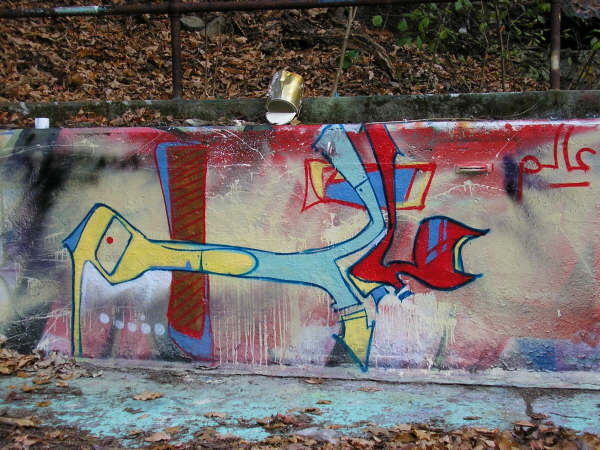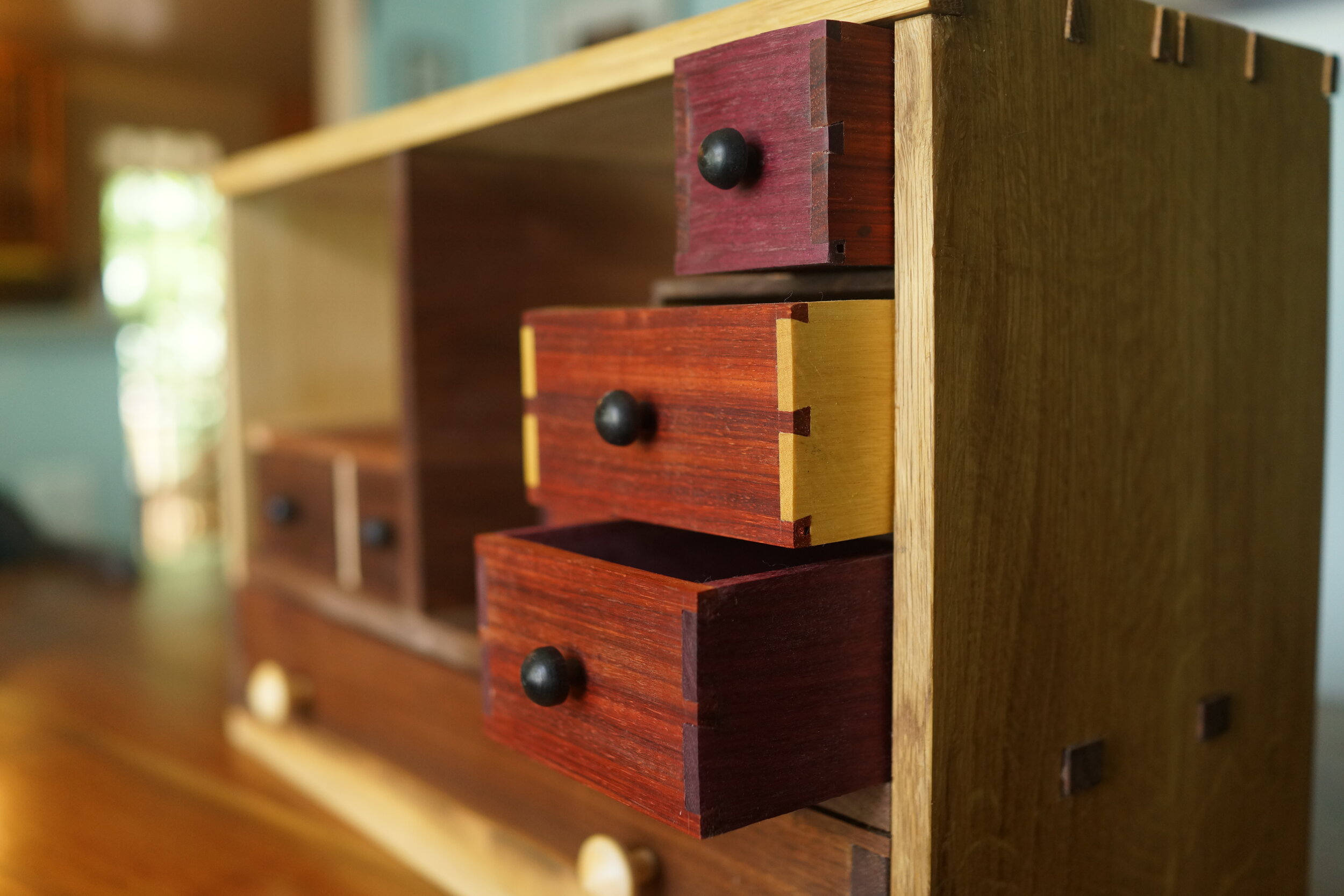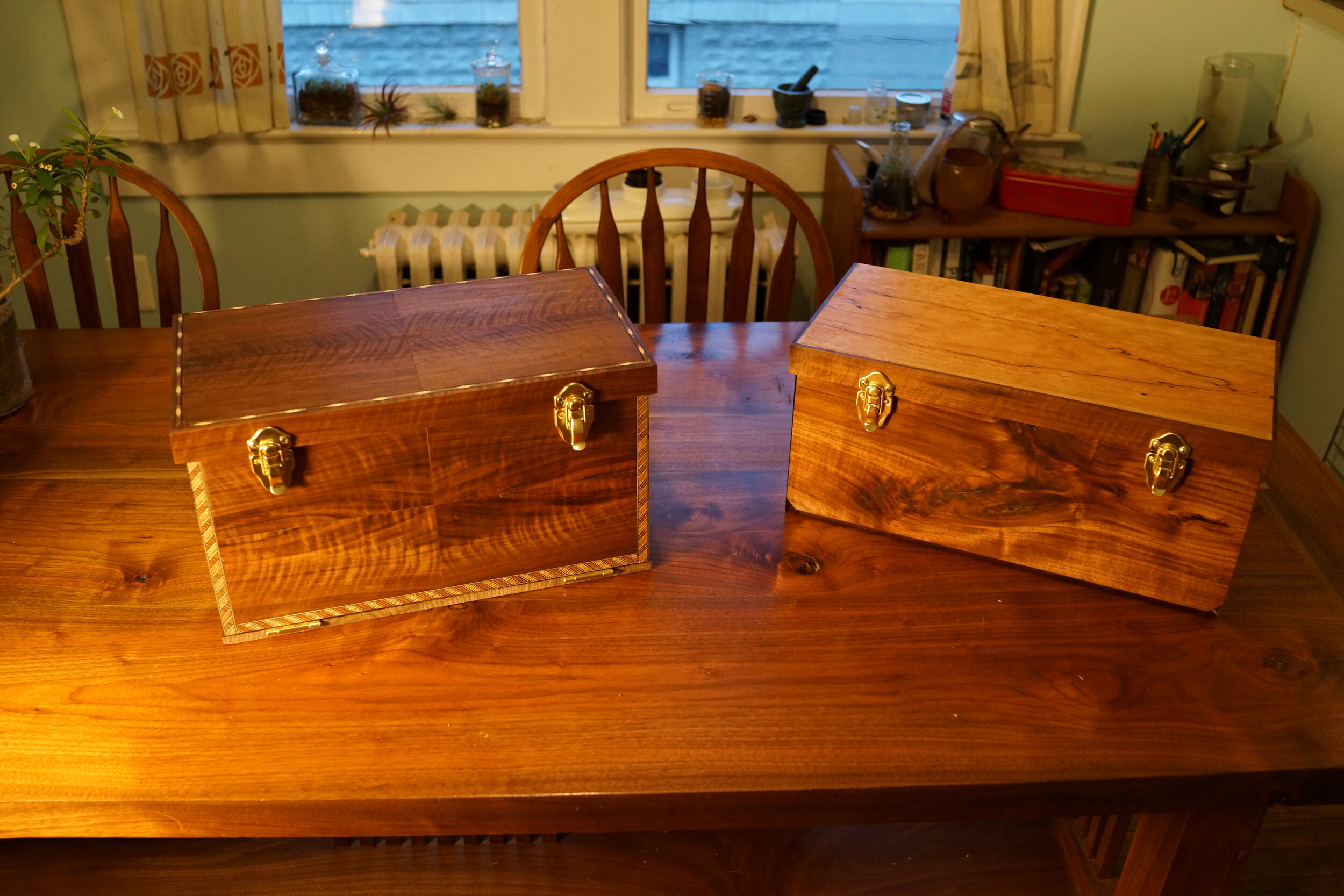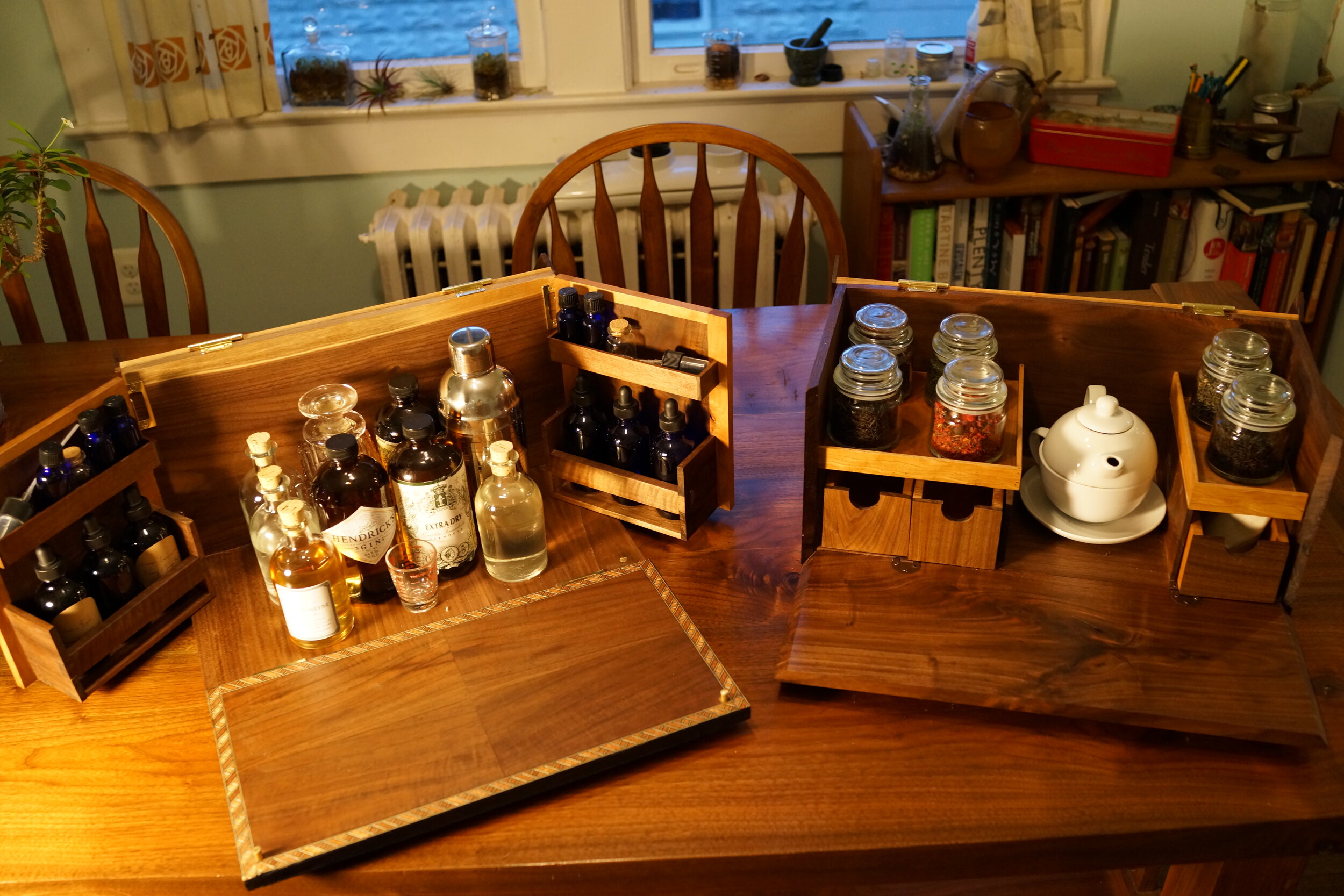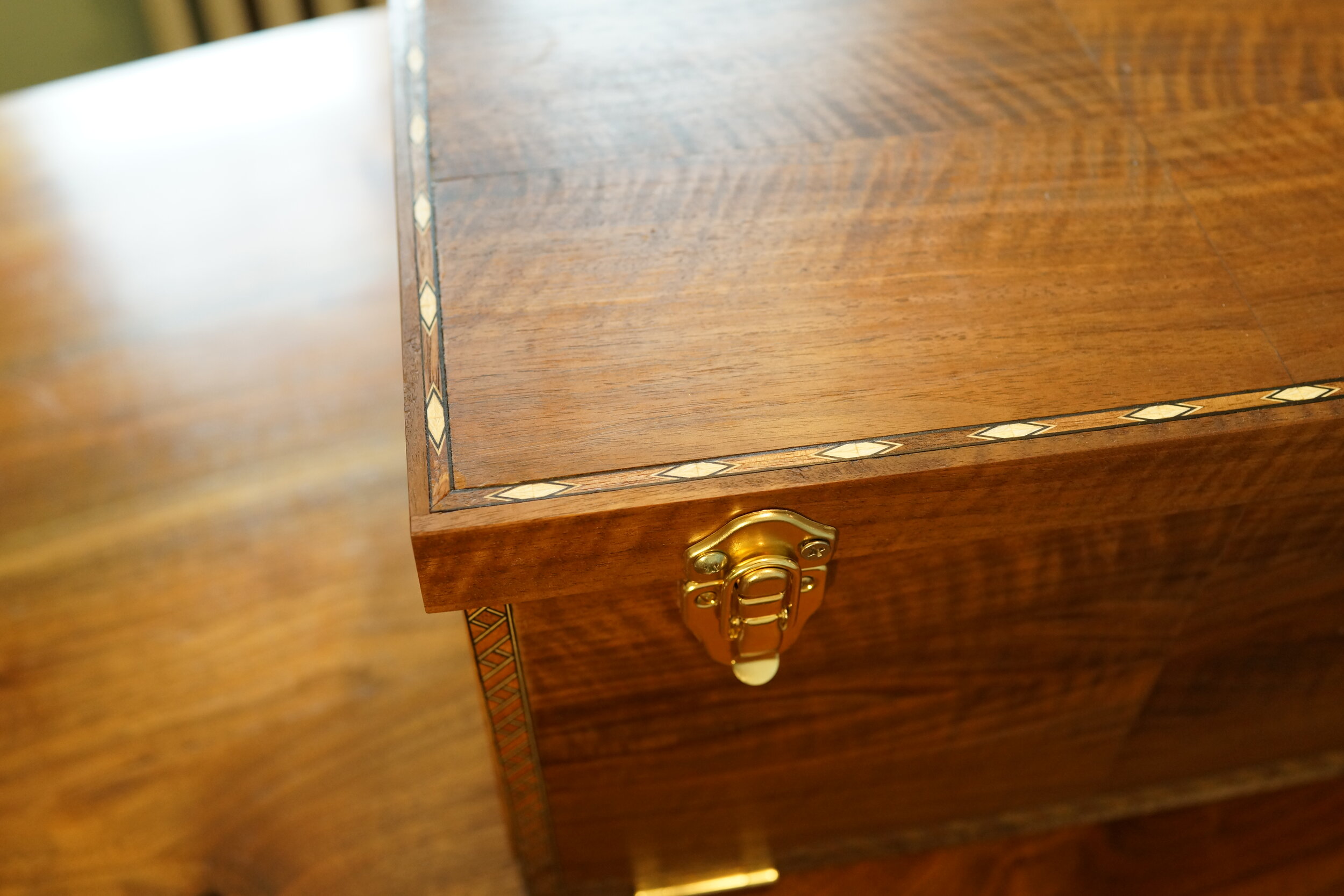This site was created by Josh Berer. I am a calligrapher and craftsman currently living in Washington, DC. I am a student of calligraphy under Mohamed Zakariya Hoca, himself a student of Hasan Celebi. I received my icazet/ijaazah from him in July of 2020, after 8 years of full time study.
In addition to pen-on-paper calligraphy, I have learned the importance of controlling every other element of the calligraphic piece; I therefore make my own paper, grind my own inks, marble the papers, pulverize the gold we use for illumination, and put the entire piece together myself. Only then can we truly call a piece our own. I make my paper at the papermaking facilities at Pyramid Atlantic Art Center in Hyattsville, MD. Everything else I make in my workshop.
Here is a short video of me discussing my training and back story.
My icazetnameh (master calligrapher’s license) was the Elifye Kasidesi, a poem praising the virtues of the Prophet, with each line beginning with a letter of the alphabet, running through the entire Arabic alphabet. As such, it has been a favorite of calligraphers for some time. The version I used was a taklid, or study, of Mehmet Şevki Efendi’s famous version. All paper, illuminations, and binding was done by me. I drew my inspiration for the koltuk illuminations from the Western design tradition, using elements designed by Frank Lloyd Wright, Charles Rennie Mackintosh, Frank Steeley, and others.
My academic background is in Arabic language and Islamic studies. I did my graduate work at Indiana University’s Central Eurasian Studies Department. My focus was on Uzbek and Dari/Farsi languages, with a focus on the Uzbek and Tajik poetry of the Communist revolution. I did my undergraduate degree in Arabic Language from the University of Washington. Upon graduation from the University of Washington I was awarded a scholarship for excellence in Arabic studies, which I used to move to Yemen. I lived in Sana’a for six months where I enrolled in a private tutorial comprising advanced readings in classical Arabic grammar, Islamic law, and modern literature. In Yemen I also studied Arabic calligraphy and oral poetry, focusing on memorization and recitation. While those subjects may seem frivolous in a world of politics, the cultural understanding conveyed in a properly-recited verse of poetry or a beautifully-written ayah of the Qur’an has opened doors in the Arab world that would otherwise be closed to an outsider. An archive of the Arabic translations I made at the time can be seen here.
I live with my wife Rachael, whose photography graces most of my posts. Together we have lived in Jerusalem, Istanbul, Yemen, Chicago, and finally Washington DC. We were married in May of 2014 in Ann Arbor.
I came to calligraphy from two directions. The first has to do with my upbringing: my mother is a professor of Islamic Art History, and my father is a bookbinder and makes illuminated manuscripts of his poetry. Between them, there is a pretty decent library of works on Islamic design, calligraphy, typesetting, paper arts, and illumination from which to draw inspiration growing up. The second direction is my past experience with art: starting when I was 14, I immersed myself in the world of graffiti, and so coming from that background, the art of the written word is familiar, although from a rather different perspective.
The switch from graffiti styles to Arabic calligraphy is not as dramatic as one might think. The hand motions that a graffiti artist practices thousands upon thousands of times are not that dissimilar to those a student of calligraphy must practice thousands upon thousands of times, until every letter comes naturally and produces a perfect result.
When I got to college, I started learning Arabic and encountered Arabic calligraphy. I was sitting and sketching a piece of graffiti, and it dawned on me that graffiti in Arabic was almost heaven-sent. The flow of Arabic letters lend themselves so naturally and perfectly to graffiti that I couldn’t help but to try it.
Shortly thereafter, though, I had a second realization. To jump into an ultra-modern manifestation of Arabic calligraphy such as graffiti without a firm grip on the traditional is, in my opinion, disrespectful. I feel that to do graffiti in Arabic, I first must pay my dues and learn where the roots are. So, for the moment I’ve put Arabic graffiti on hold. However, graffiti will always be a huge influence on my calligraphy, and that is something I’m forever going to bring to the table.
I believe that calligraphy, or any craft really, is akin to Xeno’s paradox of dichotomy: though we move closer and closer to mastery and perfection, we will never actually arrive, and in fact can never arrive, as there is always infinitely more to learn. No matter how skilled we become, how technically adept we are, it is inexcusable to claim that further efforts are unneeded, or that you have reached the pinnacle of your craft. I believe that if you find yourself saying ‘that’s good enough’ then, by definition, it is not. Chaucer put it best, when he wrote, “The lyf so short, the craft so long to lerne.”
In addition to calligraphy, I also build furniture. When I lived in Bloomington, I bought an entire walnut tree from a 95-year old man who, being a lifelong woodworker, couldn't let it go to waste when it fell on his property 12 years prior. I built the majority of the furniture for our house from that tree.
Later, after we moved to Takoma Park, an oak fell on our neighbor’s property. I had it quartersawn, revealing gorgeous figuring, and then kiln-dried it for long stability. The majority of my frames I make from that oak.









